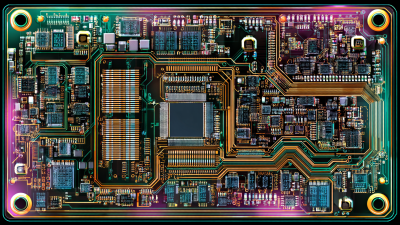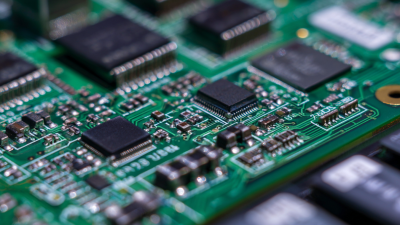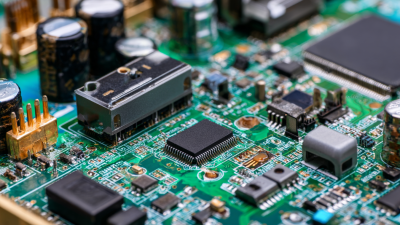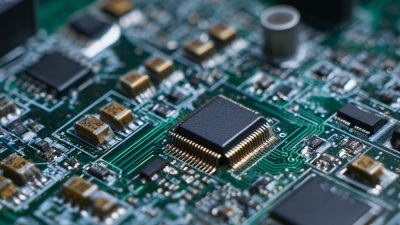
In the rapidly evolving electronics industry, the choice of PCB software has become a critical determinant for the success of projects in 2023. According to a recent report by Markets and Markets, the global PCB design software market is projected to reach $11.19 billion by 2025, reflecting a compound annual growth rate (CAGR) of 6.1% from 2020 to 2025. This growth underscores the increasing reliance on sophisticated PCB software tools that streamline design processes and improve efficiency. As electronics designers face mounting pressure to reduce time-to-market and enhance product functionality, selecting the right PCB software can significantly impact both project outcomes and overall competitiveness.
Additionally, with the continuous advancement in technologies such as 5G, IoT, and automotive electronics, PCB software must not only keep pace with these developments but also provide integrated solutions that cater to complex design requirements. Features such as advanced simulation capabilities, user-friendly interfaces, and comprehensive libraries are becoming essential as engineers strive to innovate within limited timelines. As we delve into the criteria for choosing the best PCB software for your electronics projects this year, understanding industry trends and specific software capabilities will be crucial in making informed decisions that align with project objectives and industry standards.

When selecting PCB software for your electronics projects, accurately identifying your project requirements is crucial. According to a 2022 industry report by Research and Markets, over 70% of designers express that tailored features are vital for meeting their specific design challenges. This highlights the importance of understanding the unique demands of your project, whether you are working on high-frequency RF circuits, power electronics, or complex multi-layer designs.
Start by assessing key factors such as the complexity of your design, the required simulation capabilities, and the level of collaboration needed. For instance, a project involving advanced signal integrity may necessitate software with robust simulation tools, whereas simpler designs could benefit from user-friendly interfaces and templates. Furthermore, the trend towards increased component density and miniaturization in electronics, as noted in the 2023 EDA market analysis, underscores the necessity for software that can address these evolving challenges effectively. By meticulously defining these parameters, you can ensure that the PCB software you choose aligns with both your technical needs and project goals.
| Criteria | Description | Importance Level | Examples of Features |
|---|---|---|---|
| Ease of Use | Intuitive interface and tools that are easy to navigate, especially for beginners. | High | Drag and drop components, user-friendly tutorials |
| Design Capabilities | Ability to support complex board designs and integrate various functionalities. | High | Multi-layer boards, 3D visualization |
| Library Management | Availability of an extensive library of components and parts. | Medium | Pre-built components, customizable parts |
| Simulation and Testing | Tools for simulating circuit behavior and testing design integrity. | High | Signal integrity testing, thermal simulation |
| Cost | Pricing structure and whether it fits within your budget. | Medium | One-time purchase, subscription models |
| Customer Support | Quality of technical support and availability of resources. | Medium | Live chat, user forums, extensive documentation |
| Collaboration Tools | Features that allow teams to work together effectively on projects. | Low | Version control, shared access to designs |
When selecting PCB software for your electronics projects, evaluating the user interface and ease of use is crucial for ensuring a smooth design process. The user interface should be intuitive, allowing users to navigate through features and tools without overwhelming complexity. A clean layout with organized menus and toolbars facilitates quicker access to essential functions, which can significantly enhance productivity, especially for beginners who might struggle with overly complicated software.
Additionally, ease of use encompasses the learning curve associated with the software. Programs that offer comprehensive tutorials, contextual help, and community support can greatly aid newcomers in understanding the intricacies of PCB design. Features such as drag-and-drop functionality or guided wizards can help simplify complex tasks, making it easier for users to focus on creativity rather than getting bogged down in technical details. Ultimately, a user-friendly interface combined with thoughtful design elements can make a significant difference in the overall experience and effectiveness of PCB design software.
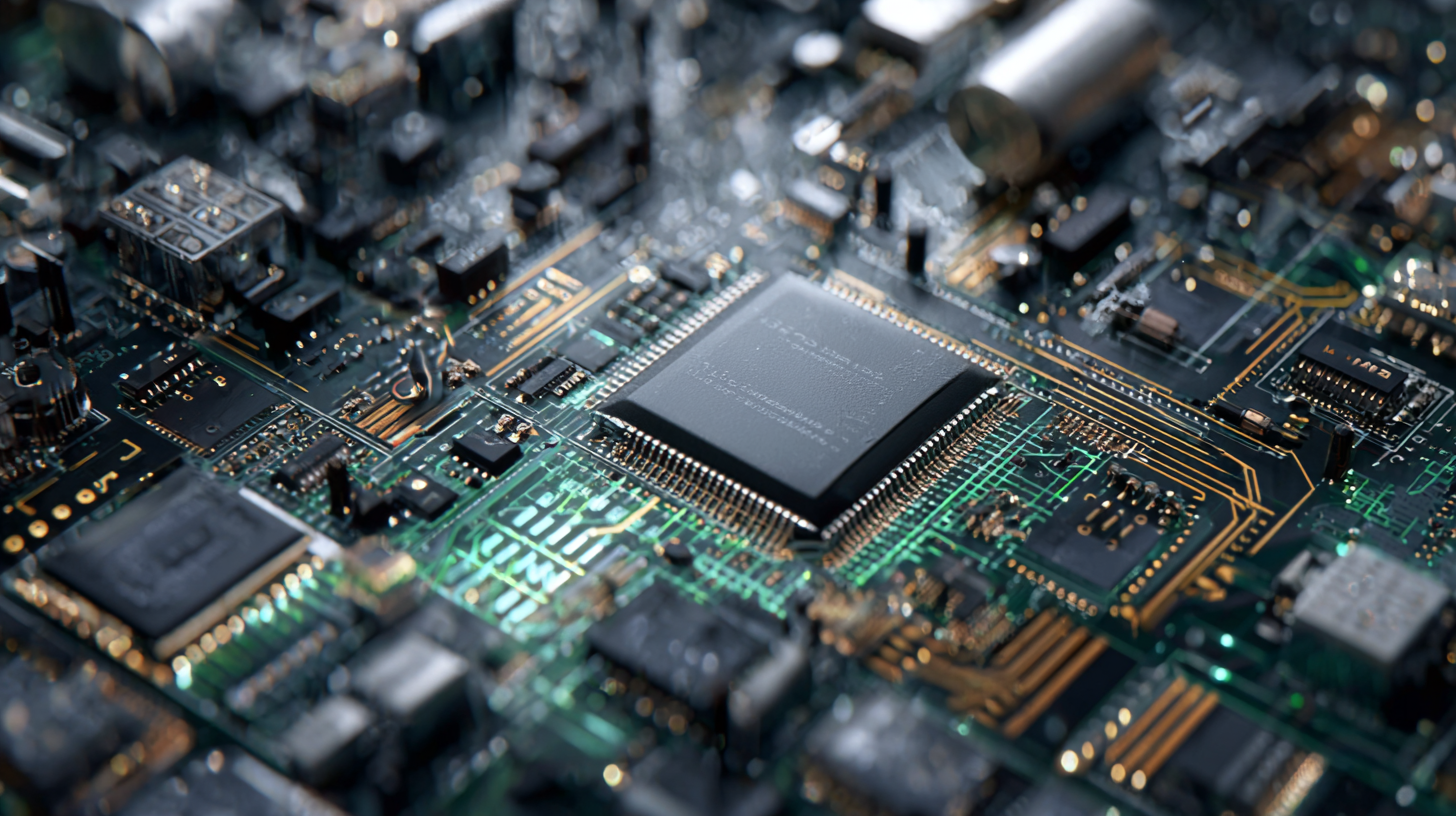
When selecting the best PCB software for electronics projects in 2023, it's crucial to conduct a thorough comparison of features, particularly simulation capabilities, design tools, and libraries. According to a recent study by IPC, nearly 80% of engineers reported that advanced simulation tools significantly reduce design errors and enhance efficiency. By utilizing software with robust simulation features, designers can predict how their circuits will behave in real-world conditions, thereby minimizing costly prototypes and revisions.

In addition to simulation, the variety and quality of design tools offered by PCB software can greatly influence project success. A survey conducted by the Electronics Industry Association found that 70% of engineers prioritize user-friendly interfaces and automation features in their selection process, as these tools streamline the design workflow. Furthermore, extensive component libraries are essential; engineers often prefer software that offers access to a rich database of parts to simplify the selection process and maintain design integrity.
As the demand for rapid prototyping and iterative design increases, evaluating these key features can help users choose the most suitable PCB software for their needs.
When selecting PCB software for your electronics projects in 2023, one of the critical aspects to consider is its compatibility with various manufacturing processes and standards. Ensuring that your software can seamlessly integrate with the manufacturing capabilities and adhere to established standards will lead to more efficient production and fewer errors. Start by identifying the specific processes your chosen manufacturer utilizes, such as surface mount technology (SMT) or through-hole assembly, and verify that the PCB software supports these methods.
Tips: Before making a final decision on software, request a trial version to test its features. This allows you to verify if it meets your design requirements and adheres to the standards necessary for your manufacturing process. Furthermore, consulting with your manufacturer about preferred software can provide insights into what will work best in practice, reducing potential compatibility issues.
Another important consideration is the support for design rules and standards such as IPC-2221 or IPC-7351. These standards ensure that your PCB design will not only function correctly but also be manufacturable without unforeseen complications. Always check if the software includes rules-based design checks or templates that align with these standards, as this can save time during both the design and production phases.
Tips: Familiarize yourself with the standard specifications relevant to your project. This understanding will help you choose a PCB software that inherently incorporates these guidelines, facilitating smoother collaborations with manufacturers and ultimately leading to higher quality products.
When selecting PCB software for electronics projects, evaluating cost and support options is paramount. A growing trend in the software market shows that many providers are offering competitively priced solutions without compromising on functionality. By focusing on modest pricing strategies, these software options can cater to hobbyists and professionals alike. For instance, some software solutions are designed to provide advanced features at a lower cost compared to industry leaders, allowing users to access essential tools for their PCB design needs.
In addition to cost, the availability of support options plays a crucial role in the decision-making process. Opting for PCB software that offers robust customer support, such as in-person assistance or online resources, can significantly enhance the user experience. This combination of affordability and comprehensive support ensures that users can tackle complex projects with confidence, knowing they have the necessary resources at their disposal. Ultimately, the right PCB software not only fits within budgetary constraints but also provides the essential support to facilitate successful electronics design and development.
